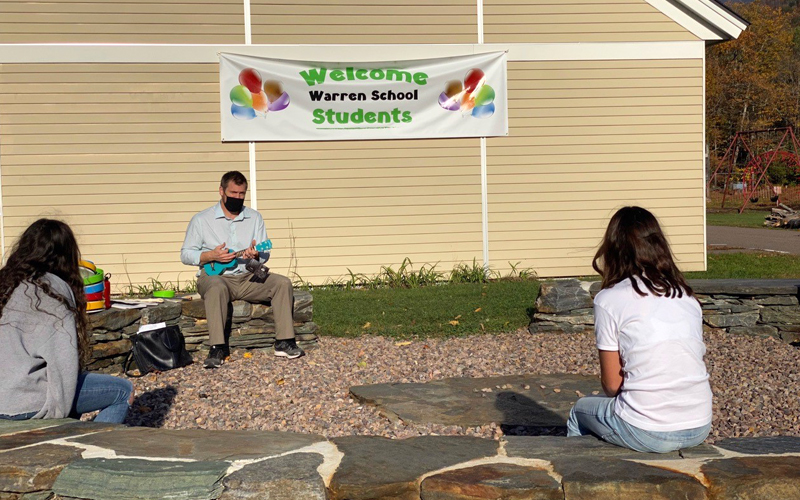COVID-19 has changed almost every aspect of how people live, work and learn. With vaccine distribution underway, there is a light at the end of a very long tunnel. This week The Valley Reporter is beginning a series of stories about how COVID-19 coping measures will be adapted once the pandemic is over and what lessons employers, employees, educators, elected leaders, students et al will take with them.
This week The Valley Reporter talked with Sam Krotinger, principal at Warren Elementary School, about key takeaways.
Krotinger said that when elementary schools were working with half of the students two days a week and the other half two days a week, with Wednesday fully remote, it was a huge burden for teachers to be trying to work with students in person while also providing programming for those working from home.
Once younger students came back to work four days a week, the remote Wednesday allowed teachers the flexibility to meet with small groups during the day which was helpful.
“Some kids do better in remote, but then there are many kids who do terribly in remote,” he said, noting that a lot depends on the family situation.
“In the end, the issue that has to be answered to is the fact that we are social creatures and children sure are. The social isolation in all remote learning is detrimental to students,” he said.
Krotinger said he’s been observing teachers learn what technology works for learning and what is just window dressing.
“But that also reminds us about how important technology is. If something like this happened 25 years ago it would have been a disaster. Last year our district just shifted to Google drive and teachers to Google classroom. But there were many districts where technology innovation was way behind,” he said.
Other takeaways include teachers figuring out a way to teach outside. He sees that continuing post COVID.
The biggest takeaway he said has been having the ability to re-analyze the traditional school day structure out of necessity.
“When you have the ability to choose which way we want to go, we’re reminded that there are variable schedules. That gave us the opportunity to try something different and see what it meant for our school,” he added.






